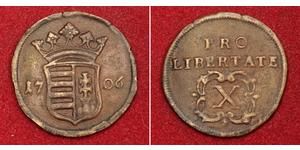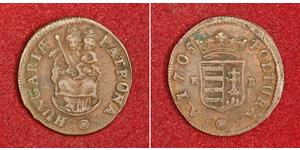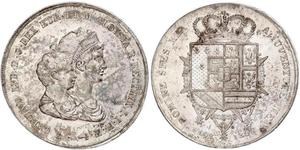(продана за $7.0)
1826, Philippines, Ferdinand VII of Spain. Copper Quarto Coin. Corroded G-VG!
Mint Year: 1826
Reference: KM-7.
Denomination: Quarto
Material: Copper
Diameter: 21mm
Weight: 3.26gm
The beginnings of colonization started to take form when Philip II of Spain ordered successive expeditions. Miguel López de Legazpi arrived from Mexico in 1565 and formed the first Spanish settlements in Cebu. In 1571 he established Manila as the capital of the Spanish East Indies.
Spanish rule brought political unification to an archipelago of previously independent islands and communities which later became the Philippines, and introduced elements of western civilization such as the code of law, printing and the Gregorian calendar. The Philippines was ruled as a territory of the Viceroyalty of New Spain from 1565 to 1821, but after Mexico gained independence from Spain, the islands were administered directly from Madrid, Spain. During that time numerous towns were founded, infrastructures built, new crops and livestock introduced, and trade flourished. The Manila Galleon which linked Manila to Acapulco once or twice a year beginning in the late 16th century, carried silk, spices, ivory and porcelain to the Americas and silver from Mexico on the return trip to the Philippines. The Spanish military fought off various native revolts, and several external threats, especially from the British, Chinese pirates, Dutch, and Portuguese. Roman Catholic missionaries converted most of the inhabitants to Christianity, and founded numerous schools, universities and hospitals. In 1863 a Spanish decree introduced public education, creating free public schooling in Spanish.
Ferdinand VII (October 14, 1784 - September 29, 1833) was King of Spain from 1813 to 1833.
The eldest son of Charles IV, king of Spain, and of his wife Maria Louisa of Parma, he was born in the vast palace of El Escorial near Madrid.
When his father's abdication was extorted by a popular riot at Aranjuez in March 1808, he ascended the throne but turned again to Napoleon, in the hope that the emperor would support him. He was in his turn forced to make an abdication and imprisoned in France for almost seven years at the Chateau of Valencia in the town of Valencia.
In March 1814 the Allies returned him to Madrid. The Spanish people, blaming the liberal, enlightened policies of the Francophiles (afrancesados) for incurring the Napoleonic occupation and the Peninsular War, at first welcomed Fernando. Ferdinand soon found that while Spain was fighting for independence in his name and while in his name juntas had governed in Spanish America, a new world had been born of foreign invasion and domestic revolution. Spain was no longer an absolute monarchy under the liberal Constitution of 1812. Ferdinand, in being restored to the throne, guaranteed the liberals that he would govern on the basis of the existing constitution, but, encouraged by conservatives backed by the Church hierarchy, he rejected the constitution within weeks (May 4) and arrested the liberal leaders (May 10), justifying his actions as rejecting a constitution made by the Cortes in his absence and without his consent. Thus he had come back to assert the Bourbon doctrine that the sovereign authority resided in his person only.
After he succeeded to the throne in 1788 his one serious occupation was hunting. Affairs were left to be directed by his wife and her lover Manuel de Godoy. Although Godoy essentially took over his wife and his office, the king was favourable towards him for all his life. When terrified by the French Revolution he turned to the Inquisition to help him against the party which would have carried the reforming policy of Charles III much further. But he never took more than a passive part in the direction of his own government. He simply obeyed the impulse given him by the queen and Godoy. In 1803, after smallpox had affected his daughter Maria Luisa, the king commissioned his doctor Francisco Javier de Balmis to bring the vaccine to the Spanish colonies on state expenses.
He had a profound belief in his divine right and the sanctity of his person. He thought it very important to seem a very powerful monarch, although his kingdom was treated as a mere dependency by France and his throne was dominated by the queen and her lover. Spain allied with France and supported the Continental Blockade, but withdrew after the Battle of Trafalgar. When Napoleon won from Prussia in 1807, Godoy returned to the French side, but France no longer considered Spain a worthy ally. But even the alliance with France, as it was, made Godoy's rule unpopular and fueled the partido fernandista, the supporters of Ferdinand, who favored a close relationship with Great Britain.
-
Only 1$ shipping for each additional coin purchased!

|
Добавил:
anonymous 2016-07-15 |
10 Лира Italian city-states Серебро
в группе 10 монет / 10 цен
⇑























